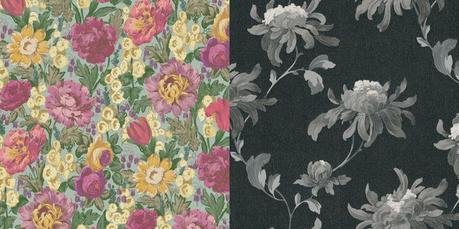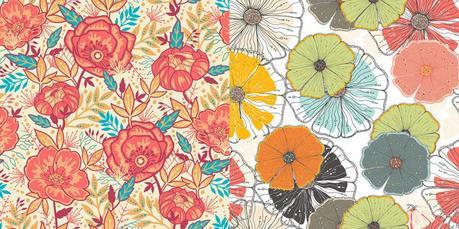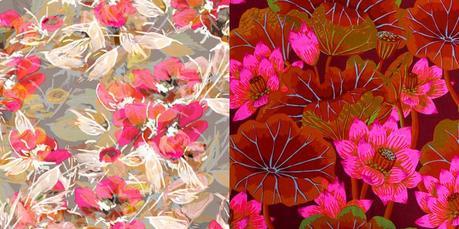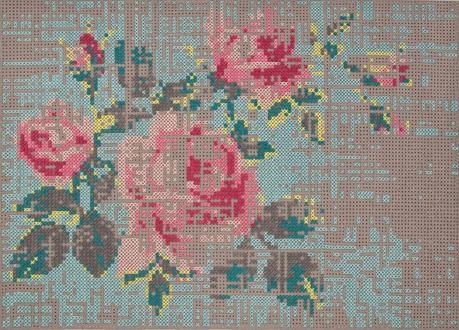We are delighted to welcome a new guest contributor to the blog this week, the fabulous Julie from Tractor Girl in Australia! We struck up a creative friendship via twitter as we responded to a tweet asking for guest bloggers and our styles just fit, so we decided to do a blog-swap.
So here we are, and we are so pleased to welcome Julie who will talk about Florals, and how flowers find their way into the world of surface pattern.
Whether you love them or hate them (really?), florals are part of the landscape in the world of surface design – and always have been, almost as long as people have been decorating surfaces.
Why are they such a perennial favourite?
Perhaps it’s because they connect to some deeper sensibility within us; a love for landscape and nature, and perhaps it’s their symmetry and their sun-like radiant centred forms. Whatever, they’re endlessly appealing.
Floral surface designs trend in cycles, much like any other form of creative endeavour. Trends can be driven by the general zeitgeist, as well as by technology. For instance, most (if not all) pattern designers these days utilise digital manipulation of forms somewhere in their designs, and this can range across a wide variety of techniques – from the simplest cut and paste, to easy resizing, stretching, changing colours, layering, selective distortion and more.
Florals come in all shapes and sizes, and there is something to suit just about everyone. Current trends include geometrics, neon, and reinventions of classics. But having said that, there is seemingly an endless array of styles out there, and pretty much anything goes!
Classics, driven by influences such as William Morris and the Victorian fashion for more realistically modelled forms will always be highly popular.

In contrast to this are vector graphics, which result in designs with clean edges, flat colour, and lines of even thickness.

Even when images are initially hand drawn, often the colouring is still added digitally, resulting in flat color with clean edges.

Some florals are based in the distinctive styles of other eras – mid-century modern is one of the more popular stylistic influences, identified by its distorted shapes, and mis-registered and layered color.

Reinterpretations of classic styles are also catching my eyes – neon highlights especially.

Reproductions of bold, large scale florals are also being seen everywhere – especially the wonderful designs of Marimekko, Florence Broadhurst, and many designs from the 70s.
Shifts of scale and medium can be quite amazing. I love this floor rug by Belgian designer-maker Charlotte Lancelot – reminiscent of a worn carpet, it is hand-stitched from industrial felt.

I am so looking forward to seeing how the technology of 3D printing influences pattern design – it’s only very recently that it has become cheap enough for broad scale use, and the possibilities are a bit mind-blowing. I came across this article on Pattern Observer recently. Watch out for new forms, especially on hard surfaces such as tiles.
Florals will always be around, and I love ‘em! I’m keeping my eyes open for new and ever-changing wonderfulness in flower form.
Why not take a look at Julie’s fabulous blog too Tractor Girl?
Author information

